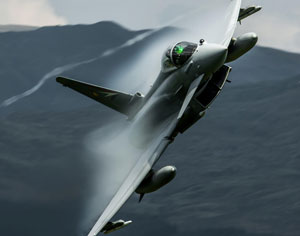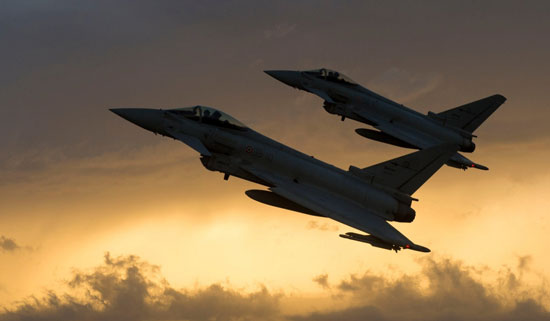

Typhoon has lost the bid offering 60 aircraft for the Government of South Korea. The Koreans initially favored the newest version of the Boeing F-15, known as the ‘Silent Eagle’, but later reverted to opt buying only 40 of the F-35A stealth fighter from Lockheed Martin. Given this precondition, EADS is currently offering the Koreans a mix of two jet fighters – namely, buying 40 Eurofighter Typhoons and 20 F-35s for their next-generation fighter procurement project.
According to the European company, such a split buy would offer a better blend of multi-mission capabilities, earlier than any other fighter type, given the low risk status of the Typhoon, compared to the ‘high risk’ of the F-35A, which has not been officially inducted into military service. EADS is ready to deliver the first Typhoons to South Korea by 2017, one year before Lockheed Martin could begin delivering the F35A to Seoul.

Seoul had initially planned to buy 60 combat jets beginning in 2017, but in September it voted down Boeing’s F-15 Silent Eagle — the only bid within the 8.3 trillion won (US$7.2 billion) budget – due to its relatively weak stealth features. Korean officials said the original technical requirements for the candidate jets were altered after the selection of the F-15SE, to reflect more advanced stealth capabilities, which experts viewed as essential to deal with the possible future threats from North Korea.
“We see the advantages of a split procurement of Eurofighters and F-35s, combining the benefits of both programs,” said Peter Maute, senior vice president of Eurofighter sales, during a press conference in Seoul. “This would be in line with the approach of some future F-35 users who will, once it is eventually in service, operate it complementary to other aircraft in a specialized role, using its stealth attributes.” Maute said this approach is similar to the UK and Italy, both have ordered the Typhoon for multi-role strike fighter and F-35 as a stealthy strike aircraft. “A split-procurement would allow Korea to take F-35 deliveries when it has reached the same phase without jeopardizing the overall time schedule for the introduction of the new aircraft fleet.”
Maute also said that should Seoul opt to buy 40 Eurofighter Typhoons, his company would maintain its promises of technology transfer and industrial participation packages, which were made when Seoul planned to procure 60 warplanes. The EADS’ industrial packages include technological support for Seoul’s so-called KF-X project to develop an indigenous warplane, and also an investment of up to $2 billion (2.1 trillion won) in the KF-X project.
Last month, Seoul decided to purchase 40 stealth warplanes for deployment from 2018-2021 and to later purchase an additional 20 warplanes, in consideration of shifts in the security environment and technological development. The requirement program, aimed at replacing the Air Force’s aging fleet of F-4s and F-5s, was initially to import warplanes from 2016, but this has been delayed until 2018.
The other fighting ground for the Typhoon is in the Middle East, where chances of selling the fighter jet seem to be diminishing, with the United Arab Emirate (UAE) having second thoughts about buying as many as 60 jet fighters as they have planned so far. The Emirate planned to spend up to $10 billion replacing their French Dassault Aviation Mirage 2000-9 fighter jets. The two options considered were the French Rafale and Eurofighter Typhoon.
After the Emirate rejected the French proposal, Typhoon was positioned as the most likely winner. The Typhoon deal, expected in London by year’s end, seems to be on hold. The Oil-rich Abu Dhabi has been the economic powerhouse of the seven-sheikdom federation known as the ‘Gulf Cooperation Council (GCC)’. Therefore, if the UAE deal collapses, Britain is also likely to lose another order with the Emirates and Bahrain, which is in the market for 12 in a deal worth more than $1 billion. The sultanate of Oman bought 12 Typhoons, along with eight Hawk jet trainers in November 2012 as part of a $4.04 billion contract.
Other prospects for selling Typhoons are in Saudi Arabia, where the UK sold 72 of these jet fighters in 2006. London is now trying to sell Riyadh 72 more Typhoons but Riyadh is currently grappling with a multi-billion arms buy from the US, modernizing their entire fleet of Strike Eagles. This leaves Europe as the main operating ground for the Typhoon, currently operated by four NATO air forces – Great Britain, Germany, Italy and Spain, and Austria.
















